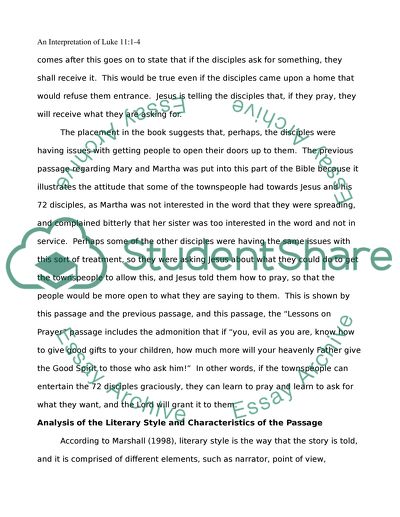Cite this document
(“An interpretation of Luke 11:1-4 Term Paper Example | Topics and Well Written Essays - 2500 words”, n.d.)
An interpretation of Luke 11:1-4 Term Paper Example | Topics and Well Written Essays - 2500 words. Retrieved from https://studentshare.org/religion-and-theology/1403306-the-model-prayer-luke
An interpretation of Luke 11:1-4 Term Paper Example | Topics and Well Written Essays - 2500 words. Retrieved from https://studentshare.org/religion-and-theology/1403306-the-model-prayer-luke
(An Interpretation of Luke 11:1-4 Term Paper Example | Topics and Well Written Essays - 2500 Words)
An Interpretation of Luke 11:1-4 Term Paper Example | Topics and Well Written Essays - 2500 Words. https://studentshare.org/religion-and-theology/1403306-the-model-prayer-luke.
An Interpretation of Luke 11:1-4 Term Paper Example | Topics and Well Written Essays - 2500 Words. https://studentshare.org/religion-and-theology/1403306-the-model-prayer-luke.
“An Interpretation of Luke 11:1-4 Term Paper Example | Topics and Well Written Essays - 2500 Words”, n.d. https://studentshare.org/religion-and-theology/1403306-the-model-prayer-luke.


